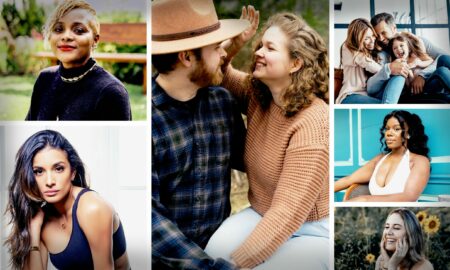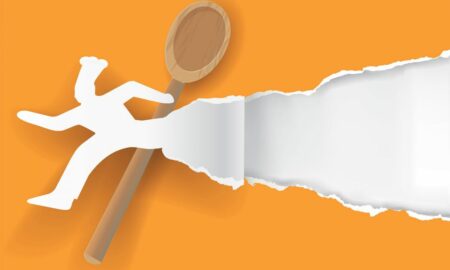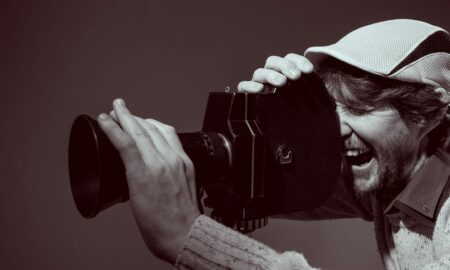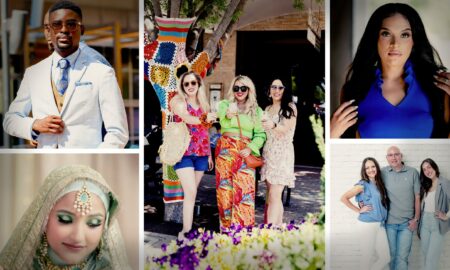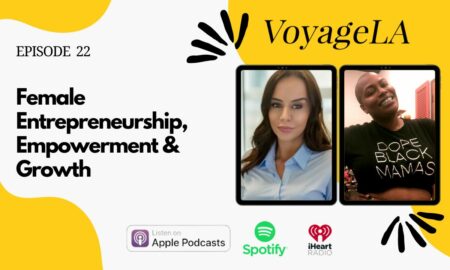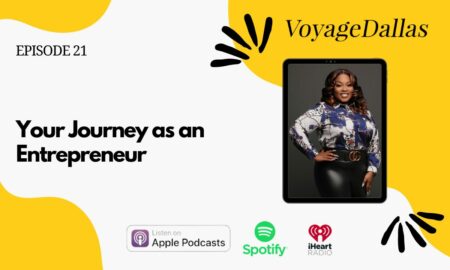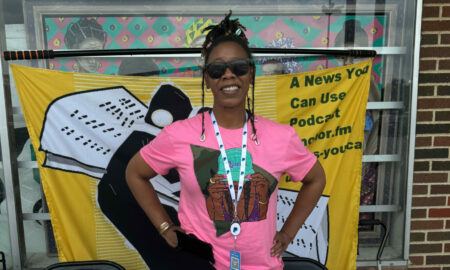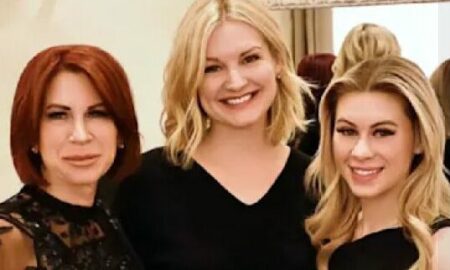

Today we’d like to introduce you to Dr. Robert Lavinsky.
Dr. Robert, please share your story with us. How did you get to where you are today?
I was born in 1972. While still a youth, I liked dinosaurs of course (who doesn’t?!) and collected fossils in central Ohio by the side of the road – fossils first, crystals later! I went weekly to see the science exhibit of rocks and fossils at COSI in Columbus (a science museum) and marvelled at the natural beauty of these things. I was “found” by an older collector named Carlton Davis collecting fossils by the side of the road in rural central Ohio (Carlton, a well-known collector, was a member of the Columbus Rock and Mineral Society).
After exposure to the club, despite being half the age or less of most folks there, my interest in minerals grew rapidly – a testament to the patience and time spent in those days by mentors in the community and in the local club circuit. There were also books and magazines to read, although they were more scientific and taught little about actually curating collects of these treasures as an asset and for fun – that, I learned by going to small shows and events throughout the Midwest. John Medici, another club member, took me on my first field trip to collect crystals in a quarry at age twelve to Lime City, Ohio (my mom had to go on the museum bus with me as a minor, for liability reasons. She still is mad I lost a boot in the gripping mud of the place…)
To fund my growing hobby, (and that is all I intended it to be!), I essentially became a part-time mineral dealer by age fourteen, selling self-collected Ohio minerals to support my emerging hobby and setting up at the Columbus and Cincinnati. I realized that “HEY! As a kid even, I could own stuff as good as in some museums, and handle and hold these things from Nature from millions of years ago?!” and that seemed a crazy revelation.
It propelled me to a fascination with the natural world that led to a Doctorate in science later, but ironically set the stage for a different career in selling these things and building museums as well – I just had no idea, at the time. I also met small town dealers and field collectors, Neal and Chris Pfaff, who were phenomenal field collectors and “the most fair mineral dealers ever,” and ended up working for them while I was in junior high school in Ohio. I took the bus up after school, 2 days a week, and helped them and learned from them. I also had a high truancy rate for missing afternoons to leave early and go play with rocks… At that time the Pfaffs specialized in offering tables at shows with specimens that were $10 each or 3 for $25. Selecting and sorting such specimens from their finds taught me a lot about quality and value.
Many days I sat sorting minerals and gluing thumbnail specimens to toothpicks while watching Star Trek reruns. At shows in Ohio, I would run around looking for bargains to trade or buy and then sell “finds” from card tables in the “junior dealers” area of those shows (they used marked monopoly money to make “swap tables” there in the day). I started with $5/10/50 specimens bought with mowing lawns and shovelling snow, combined with spending birthday money on “rocks” instead of video games. My first $500 mineral specimen was in the mid-80s, as I saved up a year’s worth of these “swap dollars” to buy a special Indian apophyllite specimen. At first, I tried collecting everything, but he quickly focused on calcites as a species I could collect and really build something around as a “collection” instead of as a “pile of random stuff.” I even started exhibiting at local Ohio shows.
A harsh judging when I was 17 or 18 years old at the Berea (Cleveland area) Show admittedly reduced me to tears and convinced me that my talents were not in labeling or organizing an exhibit case at that time! I bought my first $1000 specimen in those days, and my poor mother had a fit about “the rock shop lady” taking advantage of me when I proudly showed her on my return home via the city bus (had no car). I still have it to this day (worth $25,000 now) and am still friends with that wonderful mentor from the local rock shop (she is 83 now and just visited me here in Dallas). Ironically, as it turns out, there are now mineral species named after both of us, as a result of contributions we both have made that have helped blow up and grow this hobby that we loved! I sold my comic book collection and put the money into minerals.
The mineral hobby transitioned from summer collecting to a business after I went to college (and to my first BIG SHOW – the Tucson Show) in 1991. During my sophomore year at Rice University, I ran out of money and realized that in order to graduate while doing science lab research work in the evenings and weekends as well, I would need to support myself through the hobby instead of getting a “real job.” Minerals beckoned! I did shows all over the country each summer, and local street fairs with agate slabs, geodes, and earrings. I also forged links with many sources and dealers, in my travels.
Once, I came across a mineral collector from Milwaukee in a quarry in Indiana, and in getting to know him, found that he had “met a guy who knew a guy” while collecting in a quarry near Atlanta, and turned up a pallet of the old First Issues of Sports Illustrated with a foldout spread of old baseball cards inside. We spent the next 2 years travelling to all the small cities in the eastern USA, doing rock shows and selling those SI issues 2-5 at a time to sports card and baseball card shops along our routes. It paid for a lot of travel expenses!!! Today, they would have been worth a million dollars and more if we had kept them. But at the time, they paid food and gas while we drove around selling and buying mineral specimens.
A funny story about my rise: Sometimes one event stands out. As an undergraduate student at Rice University (a BS in biochemistry and a minor in ancient civilization), I was convenient across the street from the Houston Museum of Natural Science. In 1992, the Fabergé exhibit came to Houston from the Fersman Museum in Moscow, Russia.
Geologist, explorer, and Moscow native Dr. Dmitriy Belakovskiy (now a close friend!) was sent to accompany the exhibit with a one-way ticket from Moscow and very little money for living expenses and food with his companions. Joel Bartsch, the museum mineral curator at the time who knew me, introduced them to me because he knew I spoke Russian (from high school language class – it was interesting and it was the fifth period, so I could play hookie after that and go work on rocks…). Between my high school Russian and Belakovskiy’s rough English, we became friends. In a gesture of kindness to pay their living and food expenses during the exhibit, Bartsch gave these guys two folding card tables to sell minerals (sent over from Russia by colleagues who took them from expedition collections in the basement of the Russian museums!) at the exit from the glamorous Fabergé exhibit—most of them at $1, $2, $5, and $10 each! Between classes, I walked over from Rice University and bought from the tables, wheeling and dealing with the specimens to my own contacts.
As a college student with fast computer access (for that time), I was lucky! Nobody had fast computer connections in 1992, and I lived in a dormitory with free computers and a T1 line. I started some of the first email swap/sell lists before the days of websites. This enabled me to sell to dealers and collectors I had known since childhood in Ohio and from the show circuit. I made my first large deals over $2000 with the Fersman Museum, and I was hooked as a dealer, in hindsight, even if it took a few years to sink into me what was obvious to others. My business grew and grew in my spare time as an undergrad, and I spent a lot of time visiting collections and learning from collectors, who became friends and customers. Those crazy early deals with the Russians really set me on a new road.
INTERNET! Who knew? I had time, I had free computers and access, so one day in 1994 I bought “HTML FOR DUMMIES” at the Campus Bookstore, and tore into it. I put up my first website, www.TheArkenstone.com, at that time. Nobody could spell it, and people thought I was from Arkansas, so I changed it to iRocks.com shortly after. The internet was wide open at the time. No Google. No Amazon. No eBay. Just a few sites. I put mine up and kept growing it over the years, retooling again and again as the web developed around me, and we found that the mineral market is indeed worldwide, and grew bigger every year once the information and context barriers were broken by the World Wide Web. Business grew.
By design, my website became the largest and one of the first websites with a purposefully broad catalogue listing prices and showing the values of contemporary collector specimens, rather than more common “rock shop ” things for the public. I was propelled by the volume I was selling on the Internet to become a “Main Show” dealer at Tucson, our big show – the only major dealer who came up through the web at the time to do so.
Despite the lure of dropping out to become a mineral dealer, I loved the science I was involved in and still thought I’d have a career in biotech and academia, so I continued my schooling at UCSD. I earned a Ph.D. in Molecular Genetics (“Genetic Engineering”) in 2000 (published in Nature, and then my thesis ended up as a feature paper in Proceedings of the National Academy of Sciences). While writing a doctoral thesis and with a child on the way, I realized the life of a postdoc working in a science lab was suddenly not quite as attractive. I debated whether to go into biotech or work at home as a mineral dealer. With the gracious permission of my wife, I chose the latter – and never looked back.
Since those early Tucson days, I have kept growing my business only as I helped grow the whole trade itself and have been a dealer in the Tucson Gem and Mineral Show™ (TGMS) for over twenty years; promoting the field as a whole and its educational/inspirational opportunities on the website and encouraged both juniors and adults to come into this field. To build on the educational aspect of the hobby, in close partnership with Dr. Gene Meieran, formerly senior Intel Fellow at Intel Corp, I started an annual mineral symposium in Dallas that now attracts hundreds of collectors for a mineral immersion weekend. I also signed on to help produce a PBS television reality show, Mineral Explorers.
Another of my projects was to be a sponsor of The World’s Most Precious Treasures, a reality television documentary following gem tanzanite from the mine to the market in Tucson; it was made by French National Television in association with the gem company Cartier of Paris and has aired in Europe now. In addition, I organized and planned the Chinese Crystalline Treasures exhibition at the University of Arizona in 2013 in conjunction with partners at the university. The book on the exhibit (online: www.ChinaCrystallineTreasures.com) is really a short introduction and primer to collecting fine minerals in general; and later it was published in Chinese by the Hunan Provincial Government (the first officially authorized and translated U.S. mineral magazine issue of any kind in China).
This is the template for a future museum exhibition, hopefully coming soon to Dallas and then Los Angeles in 2021 or 2022! I have been lucky to be accepted by the community of museums in China and have taken the educational mission in China very seriously, travelling there often for talks and experiences, as well as buying trips.
We’re always bombarded by how great it is to pursue your passion, etc – but we’ve spoken with enough people to know that it’s not always easy. Overall, would you say things have been easy for you?
HECK NO! I had no money, for one, and had to bootstrap and self-finance up the hard way. In college, I was known as the king of student credit card debt and mailings, and juggled probably a dozen at any time, using the credit card cash advance checks to buy rocks. I used to throw a mattress atop my stack of rock boxes, to store them somewhere. It was a long way up from Ohio roots!
One story many people still relate with a smile to get a rise out of me was a funny one in hindsight but a hard thing at the time. My own old beat-up car was not so good, so I borrowed my then-girlfriend and now-wife’s brand new shiny Ford Explorer (her first new car purchase once she had gotten a good job out of college) to drive to the Tucson show in 1996-ish. Within short order, the car was found in the parking lot of the show venue (not the best neighborhood – a problem, for sure, with the Tucson venue at the time), resting precariously on bricks, with its brand new wheels and rims stolen. I think I actually cried. It meant a lot to her.
I hung a sign on the back of the car, so pathetically sitting there on bricks, asking people not to bump it and “to come buy rocks in room 225” of the show hotel venue, so I could buy new tires. It actually worked! I met two big customers at that time, who remain friends today. I sold a few rocks, bought her some new tire, but I guessed wrong and couldn’t replace the tires exactly and got busted on my return home from the show. She never quite forgave me.
I did have a competitor call INTERPOL once, on me. I bought a collection in France and was legally bringing it back to the USA, having pre-cleared the export with all 3 Parisian museum curators (National, Sorbonne, and School of Mines). A competitor wanted the collection badly. So, he called INTERPOL while I was on the plane, and they were waiting for my group of 5 when we landed in Houston. It made for quite a scene. We ended up having the Houston Museum rescue us and guarantee we were legit, and opening hundreds of mineral specimens on the floor of the airport.
Honestly, though, I was lucky. I came into a field comprised of local markets all over the world and got a first-hand view (through the internet) of it changing and growing and expanding into a worldwide hobby, and then a worldwide business, and now a worldwide asset class. I got lucky with the timing and was prepared to go online at a time others were not. There is no secret to that. Right place, right time. Business has had its ups and downs in terms of stress, as well. It was HARD to be in business as a younger person with the age counting against me, in promoting good things to people who wouldn’t have thought twice purchasing the same piece from other dealers who looked older. I grew my first facial hair to try to look older for selling rocks, not for getting dates!
I was happy when I started going prematurely bald in my 30s. It really helps business! I juggled money for many years to build capital, and that had its own stresses. But getting access to capital as a non-traditional business, everything from credit card processing to a bank, was always hard in the 1990s. It is different now, with everything online and available to the public. It was a lot harder to come up, back in the 90s, it seems. Everything was a hassle for a small business, shipping worldwide. I should not complain… it all worked out!
So, as you know, we’re impressed with The Arkenstone Gallery of Fine Minerals – tell our readers more, for example what you’re most proud of as a company and what sets you apart from others.
I sell fine quality items of nature, that are suitable for both collectors and museums. I am a “collector’s dealer” who feels I stand behind things and wish to treat my customers as I was treated by the great dealers and mentors when I came up in this game. We have to teach people that these beautiful minerals and crystals are worthy as art objects, and yet inspire about science and nature at the same time. They are NOT only the province of institutional museums and governments.
Unlike many dealers, I try to contribute to the field as a whole in the promotion distribution of information to show people why we love what we love. This educational push has led to endeavors that help to grow the field including large museum exhibitions and projects in the USA, Germany, China. I take great pride in working with newbies, juniors, and educating people coming into this field. Another book that I financially backed for publication—this one for children—was A Quest for Shiny Purple Crystals: Johnny and Max’s Rock Hunting Adventure,” by Monica Rakovan. It is worth reading for the kiddos!
Locally, I have worked with the Dallas Zoo for ten years and the Garland Public School District for six years, by introducing the Nature Exchange program, an initiative that brought minerals to many children in the area through a trading “shop” that involved them learning through acquisition. I am an avid source and donor of rare species for research to many museums, most notably the Smithsonian and the University of Arizona’s RRUFF project for systematic mineralogy, where I also a board member.
These contributions to the overall state of our museums, and contributing so much over years to the science database that actually led to some of the work which allows NASA’s MARS Rover to zap rocks and identify them, resulted in a newly identified mineral species being named in my honor a few years ago: Lavinskyite. The Arkenstone is more than just a business to me.
This is my passion, and I consider myself fortunate that I get to be a part of sharing this with the world. I’m proud that I get to:
1) Create new collectors, build collections, and SHARE the incredible beauty of nature with new people who seldom had appreciated how much is out there.
2) Create a new level of appreciation for these objects as an asset and an art class.
3) Promote minerals and crystals as inspiring, and educational objects to be placed in both museums and homes – and simply growing the whole field for all involved.
So, what’s next? Any big plans?
At the end of 2017, we moved to a new 20,000 square foot facility, doubling in size from our previous location and creating the world’s largest showcase for Fine Minerals as an Art & Asset class level collectible. The new building houses several museum-quality showrooms totalling over 8,000 square feet featuring crystals, fine minerals, and natural art.
We’re excited to get settled into the new space here, both as a headquarters and as a unique, one-of-a-kind venue space to attract and bring new people into this world of Nature’s Beauty, promoting minerals and crystals as inspiring, and educational, objects to be placed in both museums and homes – and simply growing the whole field for all involved.
We also run an annual educational symposium, the Dallas Mineral Collecting Symposium, in August each year to gather 200+ current collectors and curious newbies together for lectures, social activities, and a benefit auction. We plan the world’s first ever important exhibit of MINERALS as ART, in the Crow Museum of Asian Art here in Dallas, and allied with the Perot Museum of Nature and Science, to break barriers of perception as to what this is, and why it matters.
Contact Info:
- Website: www.iRocks.com/intro
- Phone: 972-437-2492
- Email: info@iRocks.com
- Instagram: https://www.instagram.com/arkenstoneminerals/
- Facebook: https://www.facebook.com/Arkenstone.iRocks/
- Twitter: https://twitter.com/thearkenstone
- Other: www.MineralAuctions.com








Getting in touch: VoyageDallas is built on recommendations from the community; it’s how we uncover hidden gems, so if you know someone who deserves recognition please let us know here.

